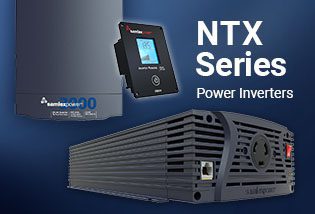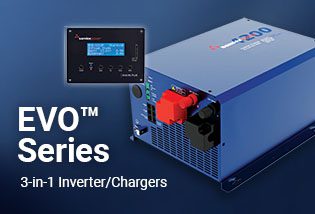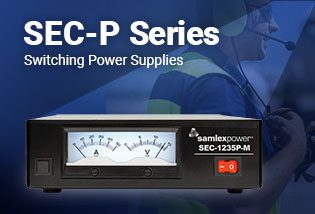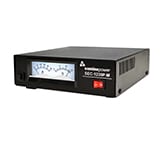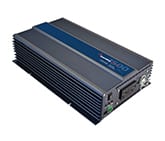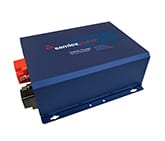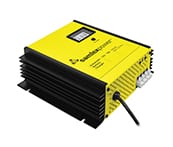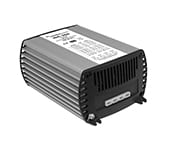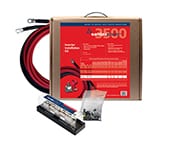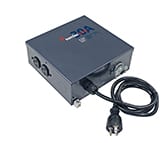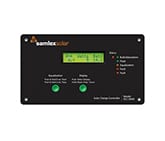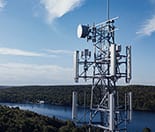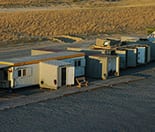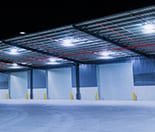Switching Power Supplies and RF noise
Why are Switched Mode Power Supplies (SMPS) associated with radio interference?
Switched mode power supplies (SMPS) employ high frequency switching and thus, are a source of radio interference, a recipient of radio interference and a conduit of radio interference. (Older linear type transformer based power supplies do not employ high frequency switching voltages and will be quieter as compared to switching type of supplies).
What are the typical sources of radio interference in a SMPS?
The primary emission sources originate in the switching devices due to their fast switching current transitions: harmonics of the switching frequency and broadband noise created by under-damped oscillations in the switching circuit. The secondary source is from the bridge rectifier, both rectifier noise and diode recovery.
The AC input rectifier / capacitor in the front end of the switching power supplies (excepting those with power factor correction) are notorious for generating power supply harmonics due to the non linear input current waveform. The noise is both conducted and radiated through the input power cord and the DC output wiring to the radio.
How is a SMPS affected by received radio interference? How can the problem be solved?
Switching power supplies are also recipients of radio interference. The normal operation of the power supply can be disturbed due to RF noise getting coupled into the power supply.
Thus, the power supply may generate excessive RF noise and lose output voltage regulation due to excessive transmitter energy being coupled through the AC / DC lines to the power supply’s regulator feedback path. This may be due to antenna being too close or due to the antenna or feed system not radiating properly. First check the antenna system SWR. Then, if necessary, relocateeither the antenna or the power supply farther apart.
What is the source of the "buzzing" sound heard at the receiver? How can this be avoided?
The receiver may “hear” the power supply. A slowly moving, slightly buzzing carrier heard in the receiver may be caused by the antenna being too close. As with the transmitter related noise pick up, a loose coaxial connector or a broken or a missing ground may aggravate this problem.
Normally these noises will be below the background or “band” noise. Increase the separation between the power supply and the receiving antenna. Use an outdoor antenna. This will reduce the amount of signal picked up from the power supply and also increase the amount of the desired signal.
What are the standards pertaining to RF noise in SMPS?
The conducted and radiated noises are limited as per the applicable national / international standards. In North America, the applicable standard is as per FCC Part 15(B) for Class “B” digital devices.
The European standard is as per EN55022, Class “B” & EN610000-3-2, 3. Thus, the RF interference is limited but not entirely eliminated.
How can conducted RF noise be limited in a SMPS?
The conducted RF noise from these power supplies is limited to the maximum allowable levels by internal filtration. The filtered RF noise currents (normally < 5mA) are bypassed to the chassis of the power supply. The chassis is, in turn, connected to the earth ground pin of the AC input power cord (for Class 1 units).
Thus, the filtered noise currents are intentionally leaked to the earth ground. This is termed as the “Earth Leakage Current”. For safety against electric shock, this earth leakage current is also required to be limited. It will be seen that these two requirements are conflicting.
NOTE: In some cases, to prevent electric shock hazard due to abnormal leakage current (like in marinas, spas, hot tubs, wet spaces etc.), the AC outlet circuits / receptacles in these areas are served through a GFCI (Ground Fault Circuit Interrupter).
This GFCI is normally set to trip when it senses an earth leakage current > 5 mA. A single GFCI may be serving multiple AC outlet circuits / receptacles and therefore, will be sensing the sum of all the leakage currents of the devices connected to these. As the switching power supplies have intentional leakage current as explained above, it may trip a GFCI feeding multiple AC outlet circuits / receptacles. In such cases, disconnect devices connected to the other AC outlet circuits / receptacles served by this GFCI.
What additional steps can be taken to reduce the effects of RF noise?
Following additional guidelines may be followed to reduce the effects of RF noise:
- Use additional appropriate AC radio frequency interference (RFI) power line filter immediately before the ac input of the power supply. Recommended: Corcom Inc. ( www.cor.com ) “Q” series. Filtered, ferrite coated cord set (www.emceupen.com ) is another choice. These cord sets, with integral line interference filters, reduce common and differential mode interferences over a wide frequency range. Because they are shielded, they are also effective against radiated interferences. In addition to the built-in filter networks, the cable conductors are coated with an RF absorbing ferrite compound. This provides additional attenuation at high frequencies that is lacking in most regular LC filters. The RF absorption of the ferrite-coated cable avoids resonance’s at high frequencies, reducing the conducted and radiated RF noises even further
- Use additional appropriate DC radio frequency interference (RFI) power line filter immediately after the DC output of the power supply. Recommended: Corcom Inc.(www.cor.com ) “DA” / “DC” series
- Twist the positive and negative wires from the output of the power supply to the radio
- The DC side positive and negative outputs of these power supplies are isolated from the chassis. As explained at paragraph 6 above, the noise currents are filtered to the chassis ground and the chassis ground is connected to the earth ground through the earth ground pin of the AC power outlet receptacle. Avoid connecting (referencing) the DC negative output terminal of the power supply to the earth ground
- Connect a 1/4″ wave length of wire on the negative terminal of the power supply. Connect one end of the wire to the negative terminal and leave the other end free. The wave length corresponds to the wave length of the interfering frequency. (May not be practical for long wave lengths)
[ Formula: Wave length (Meters) = 300 / frequency in MHz ]


